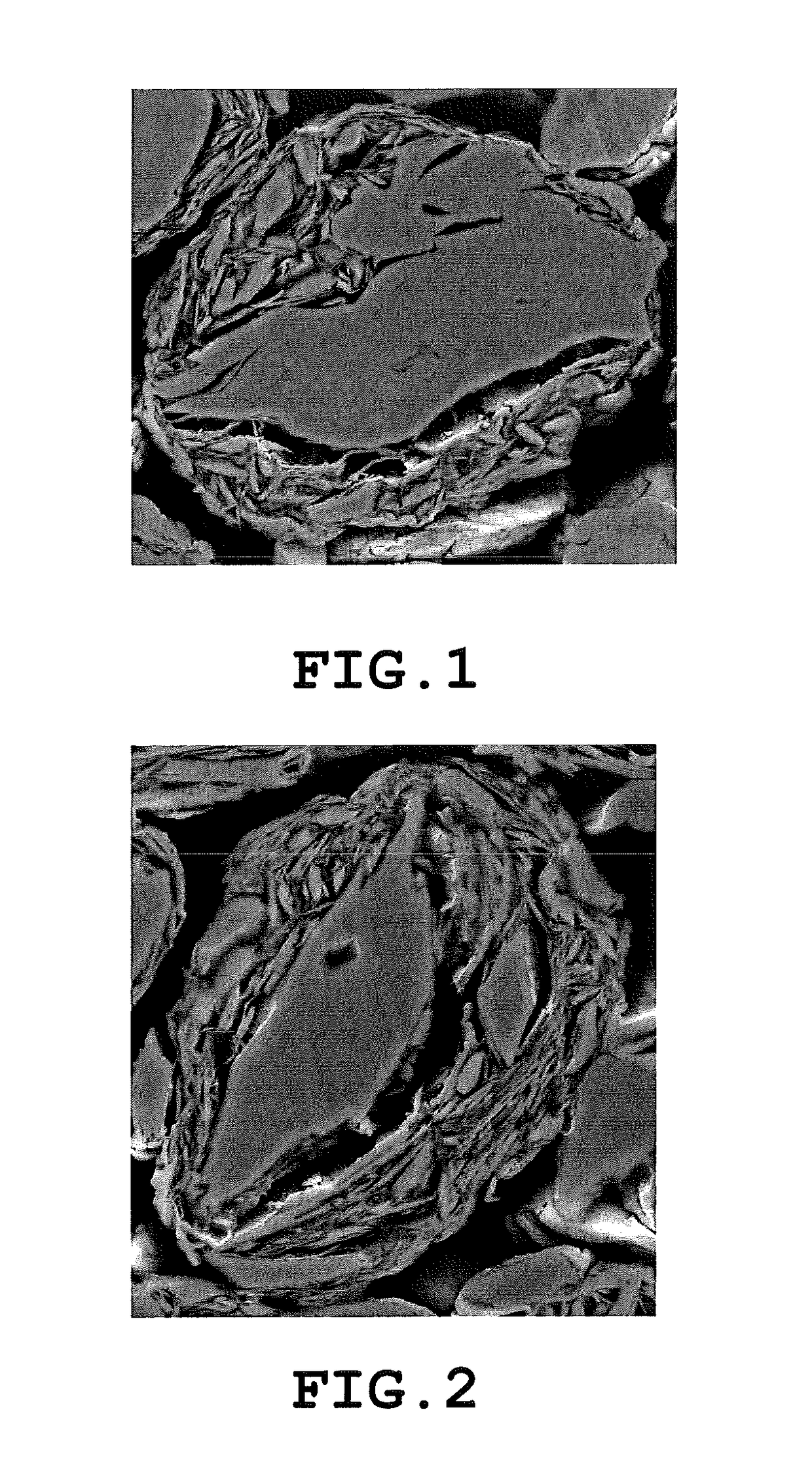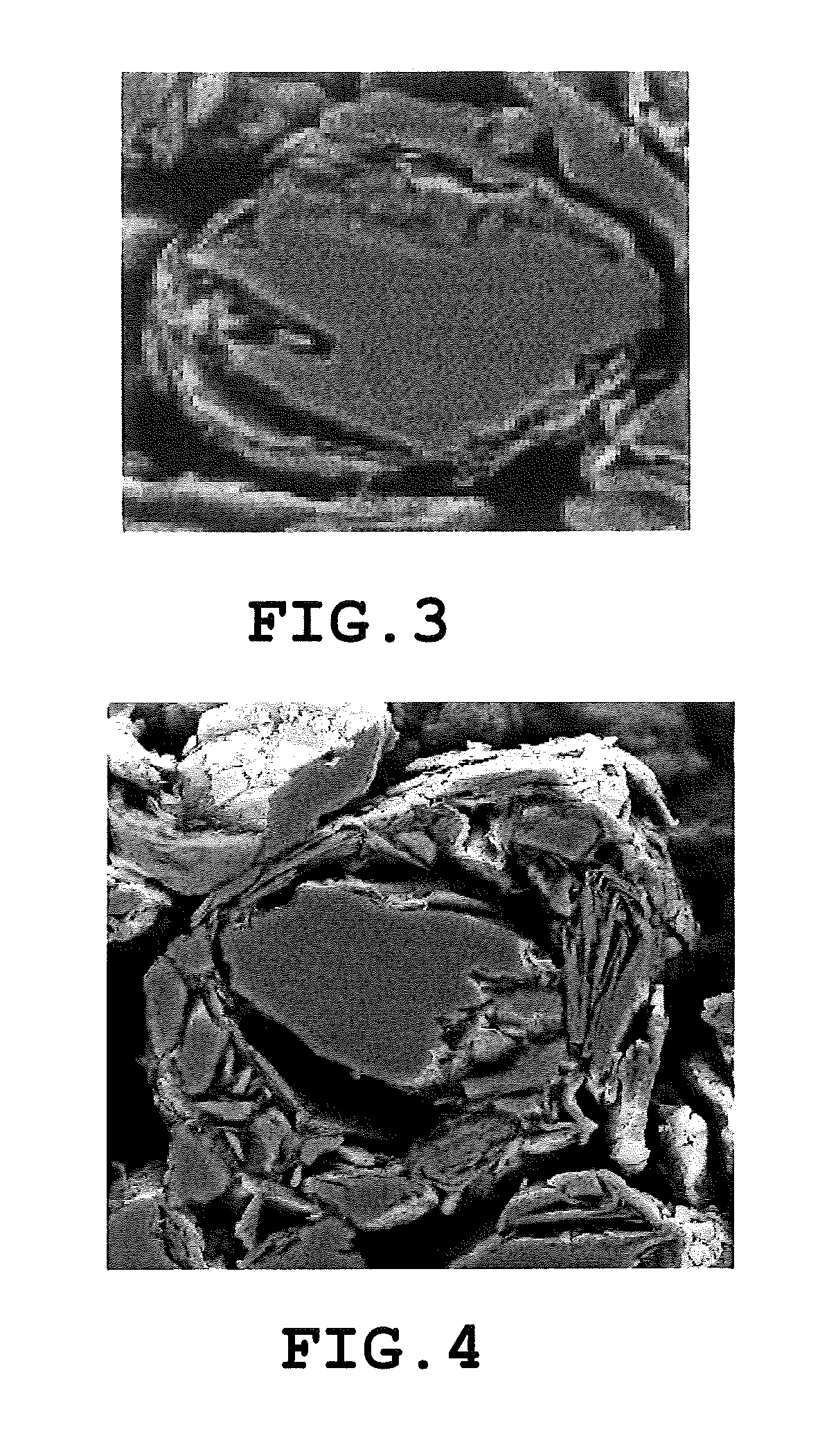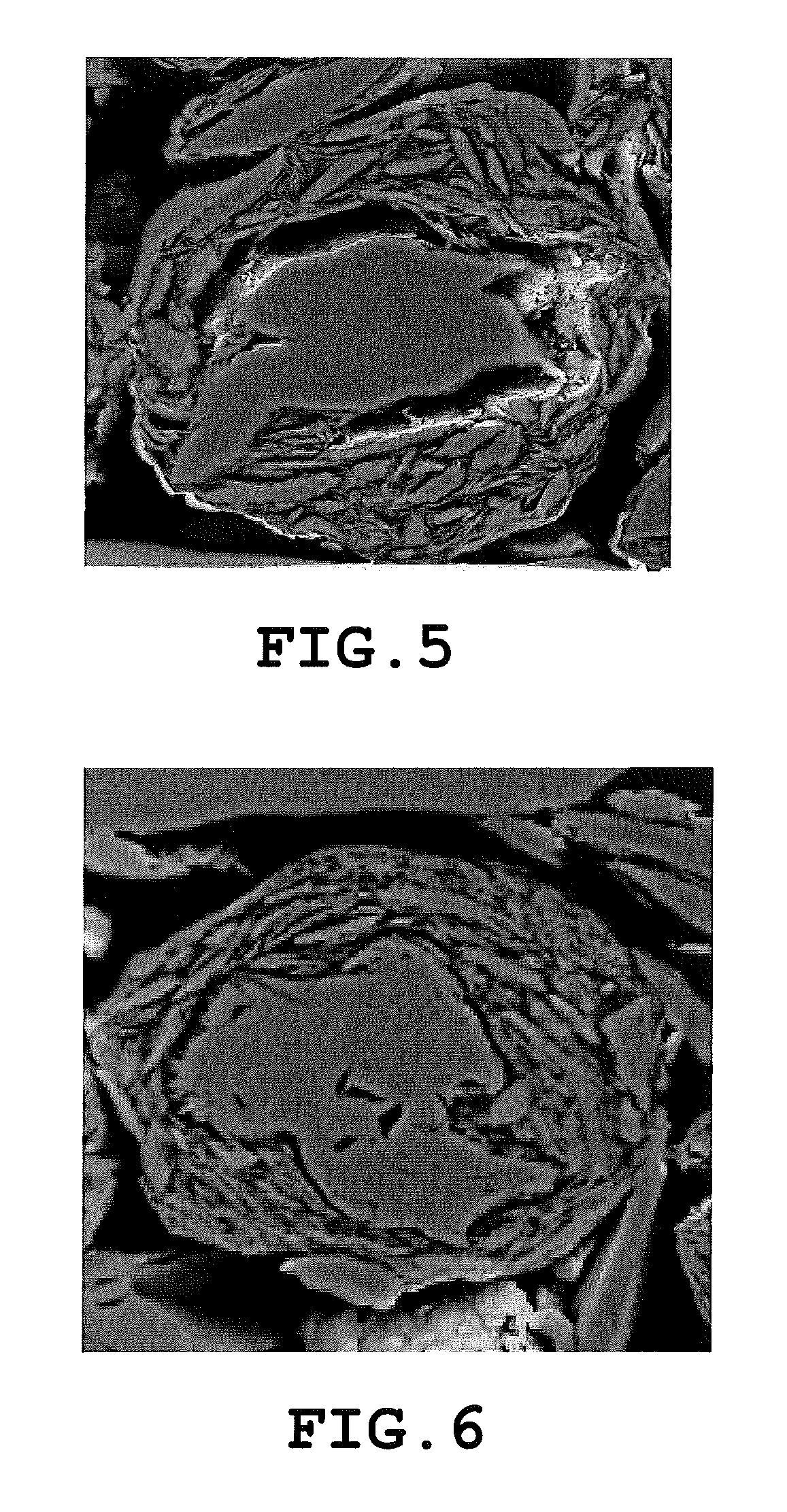Carbon material and nonaqueous secondary battery using carbon material
a secondary battery and carbon material technology, applied in the field of carbon material and nonaqueous secondary batteries using carbon materials, can solve the problems of increasing the irreversible capacity of charging and discharging during an initial cycle, deteriorating input and output characteristics, and deteriorating cycle characteristics, etc., to achieve excellent battery characteristics, excellent filling properties, and excellent initial efficiency and efficiency.
- Summary
- Abstract
- Description
- Claims
- Application Information
AI Technical Summary
Benefits of technology
Problems solved by technology
Method used
Image
Examples
examples
[0564]Next, specific aspects of the invention will be described in more detail with reference to experimental examples, but the invention is not limited to the examples. In addition, “composite carbon material” may also be described as “carbon material”.
[0565]A first experimental example (Experimental Example A) of the invention will be described below.
[0566]
[0567]An electrode plate including an active material layer having an active material layer density of 1.35±0.03 g / cm3 was prepared by using graphite particles of the experimental example. Specifically, 50.00±0.02 g (0.500 g in terms of a solid content) of 1% by mass of carboxymethyl cellulose sodium salt aqueous solution and 1.00±0.05 g (0.5 g in terms of a solid content) of styrene-butadiene rubber aqueous dispersion having a weight-average molecular weight of 270,000 were added to 50.00±0.02 g of negative electrode material. The resultant mixture was stirred for 5 minutes by using a hybrid mixer manufactured by Keyence Corpor...
experimental example a1
[0588]Green coke particles as precursors of the bulk mesophase artificial graphite particles (A) having d50 of 9.8 d10 of 4.4 μm, and d90 / d10 of 3.7, and squamous natural graphite particles as the graphite particles (B) having d50 of 5.9 and the aspect ratio of 8 were mixed in a ratio of 80:20 in terms of a mass ratio. The resultant mixture was granulated and spheroidized by using Hybdization System NHS-1 type (manufactured by Nara Machinery Co., Ltd.) at a rotor peripheral speed of 85 m / second for 5 minutes while applying impact, compression, friction, and a shear force due to a mechanical operation to the mixture.
[0589]The obtained composite graphite particle precursor was baked in an electric furnace under a nitrogen atmosphere at 1000° C. for 1 hour, and was graphitized in a small-sized electric furnace at 3000° C. under flow of Ar, thereby obtaining a composite carbon material in which the bulk mesophase artificial graphite particles (A) and the graphite particles (B) were comp...
experimental example a4
[0591]A carbon material was obtained by the same method as in Experimental Example A1 except that the spheroidization treatment was performed with only the green coke particles as a precursor of the bulk mesophase artificial graphite particle (A) having d50 of 9.8 μm, d10 of 4.4 μm, and d90 / d10 of 3.7. The same measurement as in Experimental Example A1 was performed with respect to the obtained sample. Results are shown in Table A1.
PUM
| Property | Measurement | Unit |
|---|---|---|
| aspect ratio | aaaaa | aaaaa |
| angle | aaaaa | aaaaa |
| angle | aaaaa | aaaaa |
Abstract
Description
Claims
Application Information
 Login to View More
Login to View More - R&D
- Intellectual Property
- Life Sciences
- Materials
- Tech Scout
- Unparalleled Data Quality
- Higher Quality Content
- 60% Fewer Hallucinations
Browse by: Latest US Patents, China's latest patents, Technical Efficacy Thesaurus, Application Domain, Technology Topic, Popular Technical Reports.
© 2025 PatSnap. All rights reserved.Legal|Privacy policy|Modern Slavery Act Transparency Statement|Sitemap|About US| Contact US: help@patsnap.com



